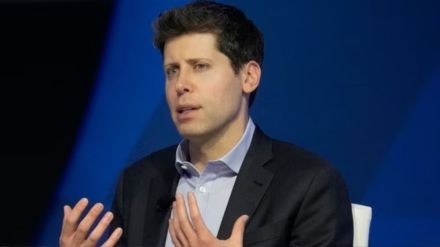By Srinath Sridharan, Policy Researcher & Corporate advisor
Sam Altman has made a triumphant return as the CEO of OpenAI, effectively quelling the boardroom upheaval that had thrown the tech-world into turmoil over the past five days.
What a Bollywoodish plot it has been! (The dramatis personae were Sam Altman, OpenAI’s board, and the OpenAI staff.) The key character actor in this plot has been Microsoft—as the largest investor in OpenAI and also as a propspective poacher of leadership talent from their investee-platform. A situation where the founder’s ouster is followed by the lead investor looking to hire the former—and almost the entire set of employees threatens en masse resignation if the Board didn’t step down—raises questions about the state of governance in such firms dealing with cutting-edge technology.
Microsoft’s involvement borders on shrewd. With Altman’s return to OpenAI, Microsoft would be seen as having supported him during a critical juncture, greatly bolstering a crucial corporate alliance. Alternatively, had Altman and his loyals joined Microsoft as AI leadership/employees, Nadella’s strategy would have proved even more astute. Microsoft would have effectively absorbed OpenAI’s talent and technology that is so pivotal to the future of the world’s second-most valuable company. Altman’s return to OpenAI, contingent upon the resignation of board members responsible for his dismissal, and Microsoft’s openness to this prospect therefore portends a shadow on corporate governance.
This is a lesson for boards that deal with high-profile CEOs, especially founder-CEOs. When dealing with pioneers, boards must not escape balancing respect for their contributions with a focus on ensuring a smooth transition should the need arise. In the present instance, the complex power shifts, key-investor moves, media missives, loyalty realignments, and board messaging, all signal a need for boards, particularly in emerging technologies field, must fortify governance mechanisms against such disruptive manoeuvres.
The situation underscores the imperative for boards to navigate leadership changes with transparency and inclusivity. In a sector where talent is as—or perhaps even more—valuable as technology, overlooking the human element can trigger organisational crises. In hindsight, OpenAI Board could have offered proactive and transparent communication during CEO transitions, including detailed reasons for loss of their confidence in the CEO.
In l’affaire OpenAI, if there was a misstep in managing Altman’s ouster, it was because the board clearly misjudged its key investor’s sentiment and employee loyalties—to the effect that it could have eroded enterprise value. No wonder, Microsoft moved fast to protect its investment in OpenAI by resolutely standing with Altman’s leadership.
In emerging technologies, where key individuals can wield unparalleled influence, managing key-person risks becomes paramount. The success or failure of an emerging tech enterprise could be tied to the vision and capabilities of a single individual. By broadening the leadership base and decentralising decision-making, boards can buffer their organisations against the inherent vulnerabilities associated with over-reliance on a single key figure—note how OpenAI chief technology officer Mira Murati switched camps almost immediately. But, this is easier said than done with respect to pioneers of emerging technologies? Apple faced this with Steve Jobs and had to bring him back. It though maybe an outlier.
Founders like Altman often embody the essence and vision of their enterprises, making collaborations complex and personal. In such scenarios, corporate structures accustomed to established hierarchies, such as Microsoft, may find it challenging to assimilate the entrepreneurial spirit and unconventional thinking that founders bring. Striking a balance between preserving the innovative essence of the start-up and aligning it with the structured processes of a corporate giant requires a nuanced approach. The risk lies in potential clash of culture, vision misalignment, and the challenge of integrating a maverick founder’s ethos into a larger, more rigid corporate framework.
The Microsoft-OpenAI dynamic, where an investor rushes to hire a just-fired-founder, introduces a complex conflict of interest. While Microsoft’s actions in the reported scenario may not necessarily breach any explicit rules, the situation raises concerns about potential poor governance behaviour.
Its moves could be seen as a tactic to protect its large financial investment in OpenAI, and a strategic bet on Altman’s leadership. The apparent alignment with Altman and the prospect of bringing OpenAI’s talent under Microsoft’s umbrella can be seen as an opportunistic move—undermining the principles of fair play and healthy competition. Large enterprises, especially tech giants like Microsoft, are expected to adhere not only to legal standards but also to ethical norms that foster a level playing field in the industry. The strategic manoeuvres, even if within legal boundaries, may be perceived as exploiting the vulnerabilities of a partner organisation, rather than upholding the spirit of collaborative innovation.
This isn’t just a tale of corporate chess moves; it’s a lesson for boards to evolve with the changing dynamics of leadership transitions. As emerging technologies redefine business paradigms, governance must adapt to safeguard the interests of all stakeholders.
